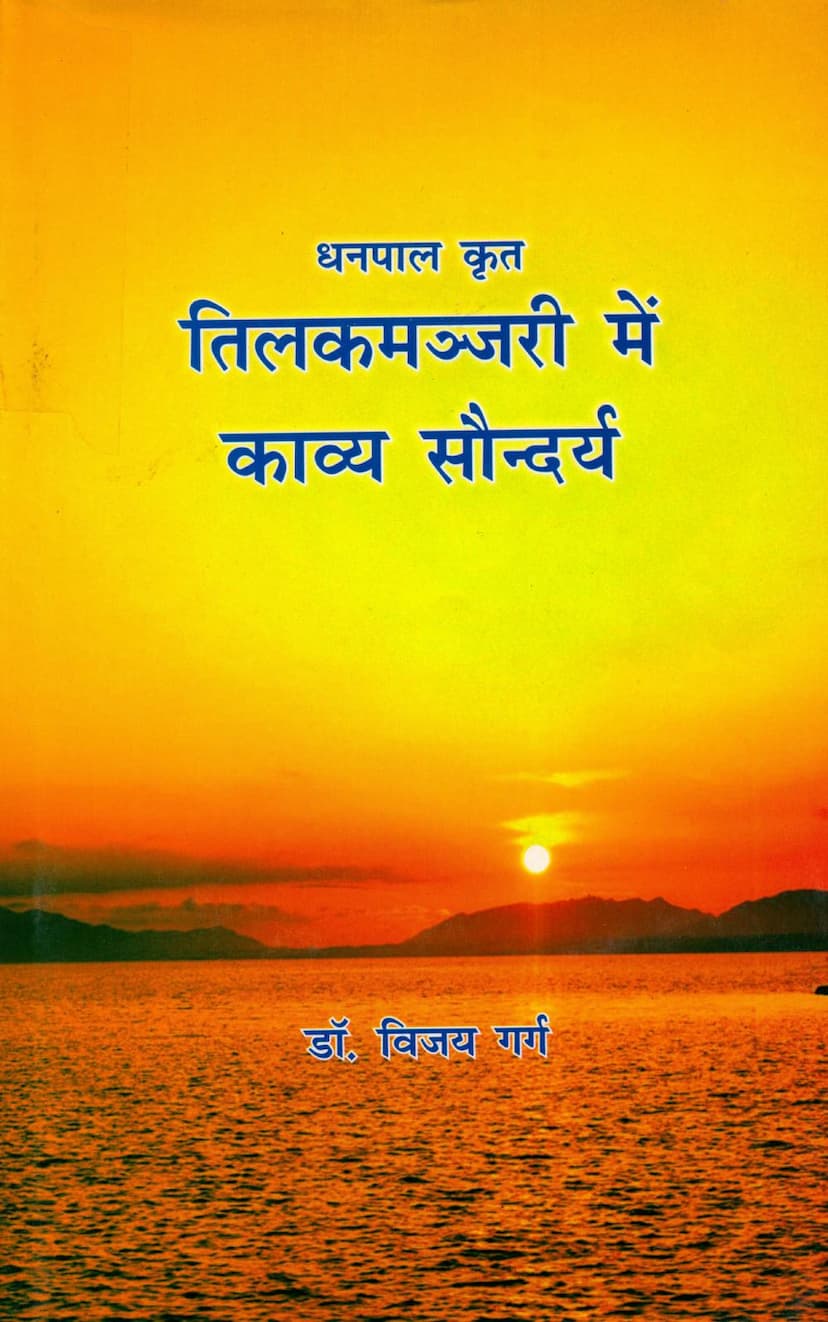Tilakmanjari Me Kavya Saundarya
Added to library: September 2, 2025

Summary
Here's a comprehensive summary of the Jain text "Tilakmanjari Me Kavya Saundarya" by Vijay Garg:
This book, "Tilakmanjari Me Kavya Saundarya" (The Poetic Beauty in Tilakmanjari), authored by Dr. Vijay Garg and published by Bharatiya Vidya Prakashan in 2017, is an in-depth analysis of the poetic and aesthetic qualities found in the Tilakmanjari, a prose work by the renowned Jain poet Dhanpal.
Core Argument:
The book argues that Dhanpal's Tilakmanjari, often considered a benchmark for Sanskrit prose (following the tradition of Subandhu, Banabhatta, and Dandi), is a masterpiece showcasing exceptional poetic sensibility. Dr. Garg systematically explores the various facets of poetic beauty present in the work, going beyond mere grammatical or stylistic analysis.
Key Areas of Analysis:
The book's comprehensive approach is evident in its chapter-wise breakdown, which delves into the following aspects of poetic beauty within Tilakmanjari:
- Chapter 1: Kavya Saundarya (Poetic Beauty): This chapter lays the theoretical foundation, discussing the concept of poetry, its definitions and classifications by various Indian aestheticians, and contrasting Indian and Western perspectives on beauty. It establishes beauty as an integral element that makes poetry attractive and delightful.
- Chapter 2: Dhanpal: Vyaktitva evam Krititva (Dhanpal: Personality and Works): This section focuses on the author, Dhanpal. It attempts to reconstruct his life, time period, literary genius, and lists his nine known works. It highlights his scholarly background and his eventual conversion to Jainism.
- Chapter 3: Tilakmanjari ka Kathasar (Synopsis of Tilakmanjari's Story): This chapter provides a summary of the intricate love story, which revolves around the reincarnation of the characters. It also mentions the four known commentators of Tilakmanjari, highlighting their contributions.
- Chapter 4: Tilakmanjari ke Patron ka Charitrik Saundarya (The Character Beauty of Tilakmanjari's Characters): The analysis of characters is categorized into divine, non-divine, and divine-non-divine. It then examines the individual character traits of male and female characters, focusing on how their personalities contribute to the overall aesthetic appeal. The book particularly emphasizes the characterization of Hari Vahan and Tilakmanjari.
- Chapter 5: Tilakmanjari mein Ras (Rasa in Tilakmanjari): This chapter is dedicated to the exploration of rasa (aesthetic sentiment) in the work. It discusses the principles of rasa as expounded by Indian theorists and then analyzes the predominant Shringara Rasa (erotic sentiment) and other supporting rasas like Adbhuta (wonder), Karuna (pathos), Vira (heroism), Raudra (anger), Bhayanaka (fear), and Shanta (peace) as they are evoked through Dhanpal's narrative. The book notes that while Shringara is the primary sentiment, the abundance of surprising events makes the story vibrant with Adbhuta Rasa.
- Chapter 6: Tilakmanjari mein Auchitya (Propriety in Tilakmanjari): This chapter examines the concept of auchitya (propriety or appropriateness) as defined by scholars like Kshemendra. It explores how Dhanpal adheres to the principles of auchitya in characterization, descriptions, dialogues, and the overall narrative flow, contributing significantly to the work's aesthetic coherence. The analysis covers various types of auchitya like Abhipraya, Alankara, Kula, Vakya, Svabhava, and Vrata.
- Chapter 7: Tilakmanjari mein Vakrokti (Deviated Speech in Tilakmanjari): This chapter delves into Vakrokti, the concept of suggestive or indirect speech that creates beauty and charm. It traces the development of Vakrokti through ancient Indian literary criticism, focusing on Kuntaka's theory, and then analyzes its manifestations in Tilakmanjari through its various forms like Varna Vinyasa Vakrokti (beauty of letter arrangement), Pada Purvardha Vakrokti (beauty of word-root), Vastu Vakrokti (beauty of subject matter), and others. The author highlights how Dhanpal masterfully employs Vakrokti to add layers of meaning and aesthetic delight.
- Chapter 8: Tilakmanjari ki Bhasha-Shaili (The Language and Style of Tilakmanjari): This concluding analytical chapter examines Dhanpal's prose style. It notes his conscious departure from the overly complex and shlesha-heavy styles of some predecessors, opting for a more lucid, flowing, and expressive language. The analysis discusses his skillful use of Vaidarbhi, Panchali, and Gaudi styles, adapting them to the context and mood of the narrative, and demonstrating his mastery over Sanskrit prose.
Overall Contribution:
"Tilakmanjari Me Kavya Saundarya" is a scholarly work that aims to elevate the appreciation of Dhanpal's Tilakmanjari by highlighting its deep engagement with classical Indian aesthetics. Dr. Vijay Garg's research provides a critical framework for understanding the enduring poetic beauty of this Jain literary gem, showcasing how it successfully integrates narrative, sentiment, propriety, and stylistic brilliance to create a truly captivating literary experience. The book is a valuable resource for students of Sanskrit literature, Jain studies, and literary criticism interested in the aesthetic dimensions of classical Indian prose.